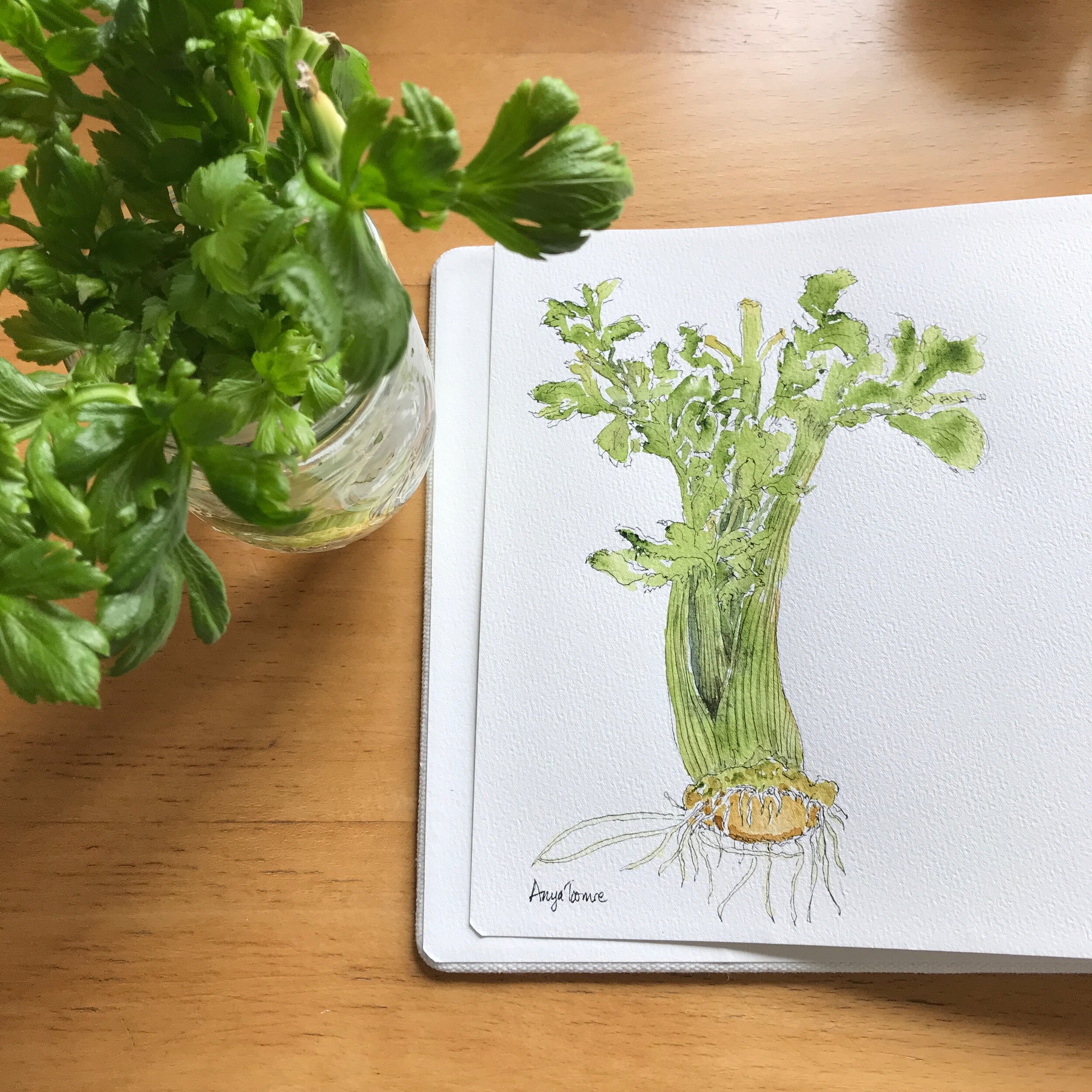Ideas, Questions and Connections
Simple Pleasures, 2019. Ink and Watercolor. This piece of art came out of an art class on visual storytelling. Working on the project brought ideas, questions and connections into play to create this final piece.
I began writing this week’s creativity post without a clear subject in mind. This was slightly stressful but also made me kind of curious to see what would emerge. I started with the obvious, “I want to write a blog post but have no ideas! What to do?” After several false starts, three related themes emerged: ideas, questions and connections.
I started thinking about where ideas and inspiration come from. Such a large topic! What makes an idea different from a thought? How do we come up with ideas? Why are some ideas followed up on and others discarded?
As I was thinking about ideas, I paid attention when I had a-ha moments. Here is a short collection of different places my mind wandered.
I thought about the word “idea” and tried to define what I mean by that both in general and related to creativity. After going down various rabbit holes, I decided that it is a huge topic. It’s book worthy. Definitely worth more than a few paragraphs here. Doing a Google Search on “books on ideas and creativity,” dozens of interesting books showed up. Some I’ve read, many I have not. Now I have more books to add to my want-to-read list. That was a slight distraction. I invite you to search with the same terms and see what you find interesting.
I thought about how some part of ideas and inspiration occur while being outside and doing things. Seeing new things often makes connections to existing ideas. For example, I saw some geese in the sky who must have only taken off recently because they were in a messy unformed clump. Gradually though about half of the birds broke off and flew themselves into the classic arrow formation. The other half were still in the messy group, so un-geese-like, as they flew out of my sight. It was really interesting to see the geese moving themselves into formation. Mesmerizing even. But why only some of the birds? Why didn’t all the birds fly like that? And how did they learn how to do that?
I pushed a little further and began thinking of ideas that come because of asking questions. A bit of additional serendipity happened with an email that came in today and I was introduced to Warren Berger’s website A More Beautiful Question. There’s a wonderful collection of things to explore there! Asking slightly different questions leads to different ideas and inspiration.
I wasn’t having much luck with putting words together for today’s post, so I thought I’d take a break. I did some reading partly for the distraction but also partly to see what inspiration might come from someone else’s words. In The Art of Possibility by Rosamund Stone Zander, I came across the thought that ideas emerge sometimes because of parameters set, framing of questions, and answering challenges.
And finally, I considered that ideas also come from and are made with connections. Talking to people, sharing ideas, seeing what ideas come up, seeing where someone may take that idea, who else might be introduced to the conversation about what’s being talked about. It’s an endless, fascinating path starting with one thing and ending up with so many more.
There is obviously so much more that can be said about ideas, questions and connections. It would be lovely to have an extended conversation about them. For now, however, what sparks ideas and inspiration for your creative pursuits?










